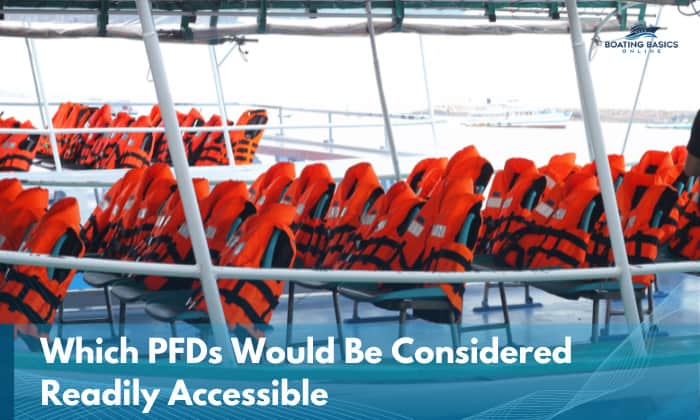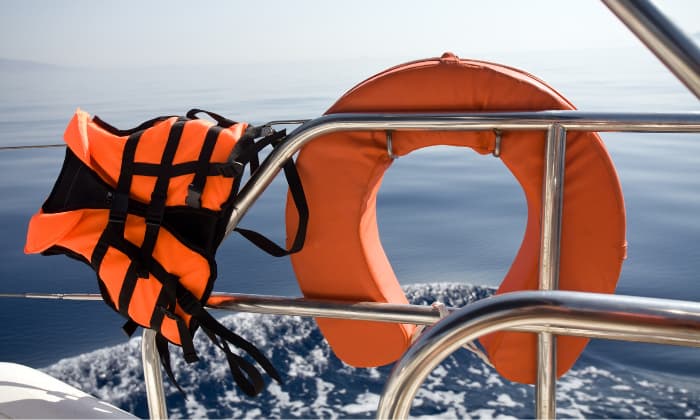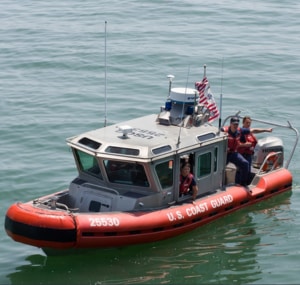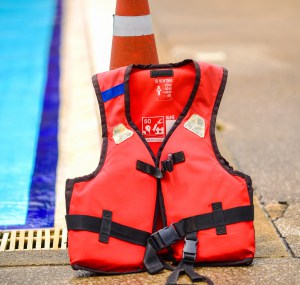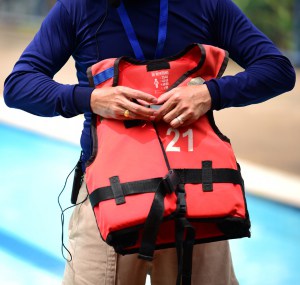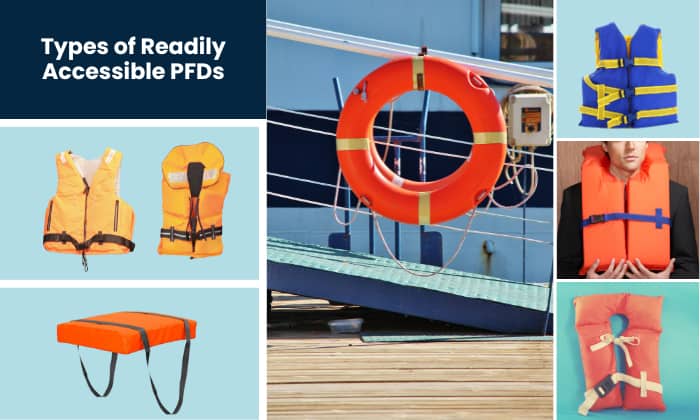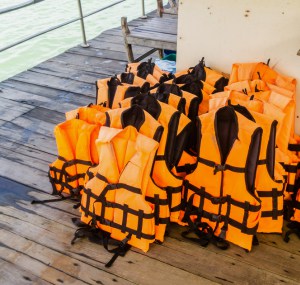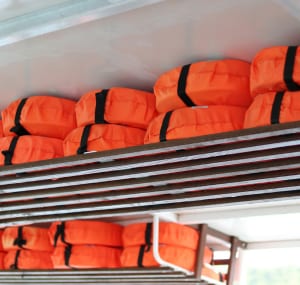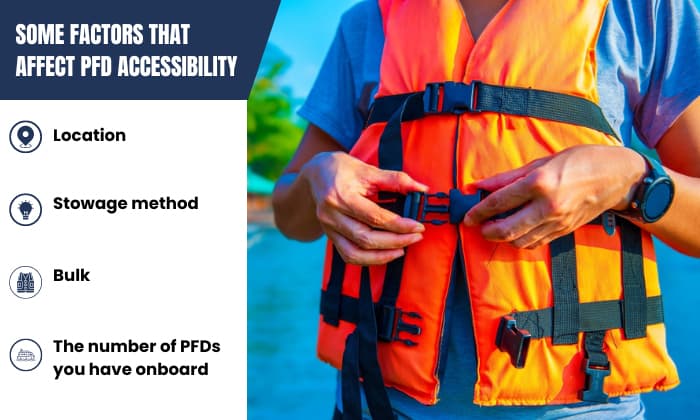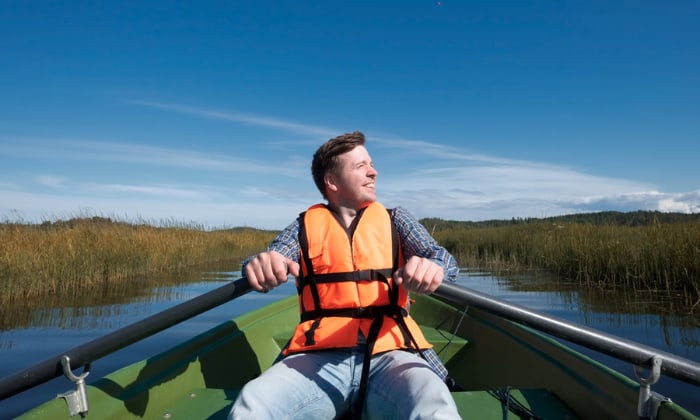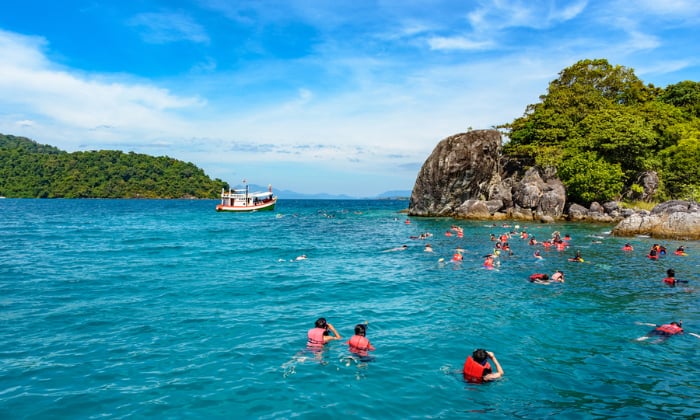It’s great that you’re asking, “Which PFDs would be considered readily accessible?” because anyone participating in water-based activities should know their options. It’s a great step toward emergency preparedness and peace of mind.
Looking at U.S. Coast Guard guidelines, common sense dictates that “readily accessible” PFDs are those that the crew and passengers should be able to promptly get and quickly wear, especially during emergency situations. In short, they shouldn’t be stored in closed containers and must be easily located.
Table of Contents
What Are Readily Accessible PFDs?
This may surprise you a bit, but the U.S. Coast Guard does not offer an exact definition of what a “readily accessible PFD” is.
If you’re wondering what statement about PFDs they did make in this context, their guideline simply stated that a USCG-approved life jacket should always be “carried by persons standing watch” (aka watch stander) in what they termed as a “watch station”. In any large ship, the bridge can be considered as such, while in smaller vessels, it is the helm.
As such, these passages only prove that selecting the right type of PFD for a passenger and making sure that it’s readily available falls, first and foremost, in the captain’s hands.
The assigned watchkeeper’s responsibility is to make sure that the PFDs are easily visible, accessible, and not to be confused with other safety equipment in case of a life-threatening situation.
There’s no specific storage method stated, but it’s easy to come to the conclusion that “PFDs on a boat must be readily accessible” translates to “you can’t keep them out of your sight”.
US Coast Guard regulations
I’ve looked into all USCG guidelines regarding PFDs, and they definitely don’t cross out any type of PFD as far as this topic is concerned.
In fact, it’s actually a must to wear a Type I, II, III, or V PFD in Louisiana as long as you’re riding an outboard-run motorboat with a hand tiller and the vessel’s size is “less than 16 feet.”
In Florida, as in the rest of the US, all people onboard are encouraged to wear a lifejacket, but not necessarily if the vessel’s not underway (or moving).
That being said, the best USCG regulation is to simply wear it at all times as long as you are onboard. I mean, just think about it a bit: you can spend all your mental energy wondering, “When is a PFD readily accessible?” when in the end, it won’t save you if you don’t manage to put it on on time!
Overall, these are the other USCG regulations worth remembering and adhering to:
- Always carry enough lifejackets and PFDs for every passenger you have onboard.
- Make sure they’re all USCG-approved.
- If inflatable, keep what you’re using uniform, especially in how they operate.
- Lifejackets should have a serviceable light and whistle.
- They should be well-maintained and stored properly if not required.
How to Identify Accessible PFDs?
1. Labeling requirements
Regarding the visibility and accessibility of PFDs, we can stick to the following fundamental labeling requirements:
- The label should confirm that the equipment is USCG-approved.
- Information about the lifejacket’s correct fit (people who can wear it), intended usage, how to wear, and how to care for it.
2. Visual inspection tips
This accounts mainly for how you position and place the safety gear while on your vessel and the PFD’s overall condition.
- Logically, PFD should be carried onboard in such a way that they won’t cause unnecessary delay or hindrance. Refrain from stowing them in a location that may become inaccessible quickly in the event of an emergency.
- Make sure that there are no visible signs of damage and that essential parts like straps and buckles are still working as they should. Don’t fall into a false sense of security just because you have enough life jackets onboard – you may end up not being able to use them.
- They should fit the person they’re intended for. The literal PFD meaning is “personal flotation device” – emphasis on personal. It should be comfortable for the wearer and the PFD should be able to hold his or her entire weight.
Types of Readily Accessible PFDs
1. PFDs that are considered readily accessible
Any USCG-approved PFD, such as the ones depicted in the photo above, can be considered readily accessible as long as they:
- Are always available within arm’s reach.
- Not hidden from sight.
- Not piled under other items.
- Can be worn in the least amount of time.
- Doesn’t have defects that may cause a delay in wearing.
2. PFDs that are not considered readily accessible
Again, we need to exercise common sense when identifying PFDs that aren’t readily accessible. At best, here are the “don’ts” you should steer clear of:
- Stowed in a locker or any compartment obstructing your and your passenger’s view of it.
- Requires you to do needless extra action just to get to it, like climbing over an obstacle or unlocking a lock and opening a lid or cover.
- If stored in a closed compartment (although this is discouraged), there’s no sign indicating that that’s where the PFDs are stored.
- Generally not readily available during a fire, when a person gets thrown overboard, or when the boat’s beginning to sink.
Factors Affecting the Accessibility of PFDs
Based on the facts stated above, here are some factors that affect PFD accessibility.
- Location
Naturally, where you put your PFDs would greatly affect whether you can grab them at a moment’s notice or the opposite.
- Stowage method
Putting them on a hook or an open shelf is infinitely better than keeping them in a concealed or locked compartment.
- Bulk
Some may argue that a Type I PFD is bulkier than its Type II and III counterparts – and thus, not making it “readily accessible”. It may cause some measure of discomfort due to its bulk, which could take some getting used to.
However, it’s still the most reliable when it comes to keeping the wearer’s head above water. And, will it really be an issue if you already put it on the moment you step foot on the boat?
- The number of PFDs you have onboard
Sheer lack of lifejackets to accommodate all your passengers goes against any kind of maritime readiness expected from the skipper or boat operator.
Other Considerations
- Any PFD should suit the person’s size and the water activity they’ll be using it in. Obviously, you should refer to the markings and labels to get the most suitable equipment for yourself.
There’s no beating testing the PFD out by taking the time to put it on, though.
Overall, the jacket should be snug around your body and not be so loose that someone can pull its top section towards your ears.
- When not in use, ensure your lifejackets are clean and dry before you store them. No trace of moisture or salt should be present.
Don’t put them in a place where they’ll be exposed to direct sunlight.
- Regularly conduct visual checks of your PFDs, especially the parts mentioned above.
Frequently Asked Questions
How often should I replace my PFD?
The golden rule of thumb is to replace them the moment they show signs of wear and tear and are damaged to the point of no longer functioning properly. The same goes if you see any modifications that have been done to them.
Can I wear my PFD over my clothes?
Yes, it’s entirely fine to do this. As long as the PFD is not worn under clothing, it will be able to function, i.e. save you should you find yourself in the water, as it should.
Which PFD is designed to be thrown to someone in the water?
It’s the Type IV PFD, and it’s the only one that you’re not required to wear at all times while onboard. This is because it’s meant to be thrown and held onto by a person in the water while awaiting rescue, with the caveat that it’s not meant for turbulent waters.
Conclusion
In the end, the answer to “Which PFDs would be considered readily accessible?” is really more of a concern for proper PFD handling and usage while driving or riding any kind of watercraft. There’s no such thing as a USCG-approved PFD that is not accessible simply because of its design.
You just have to make sure that the flotation devices end up in the hands of the individuals that need them the most in the present circumstances.

“My intention from the first day establishing Boating Basics Online is to provide as much help as possible for boaters who want to experience a first safe and convenient trip. So feel free to join us and share your beautiful journeys to the sea!”

